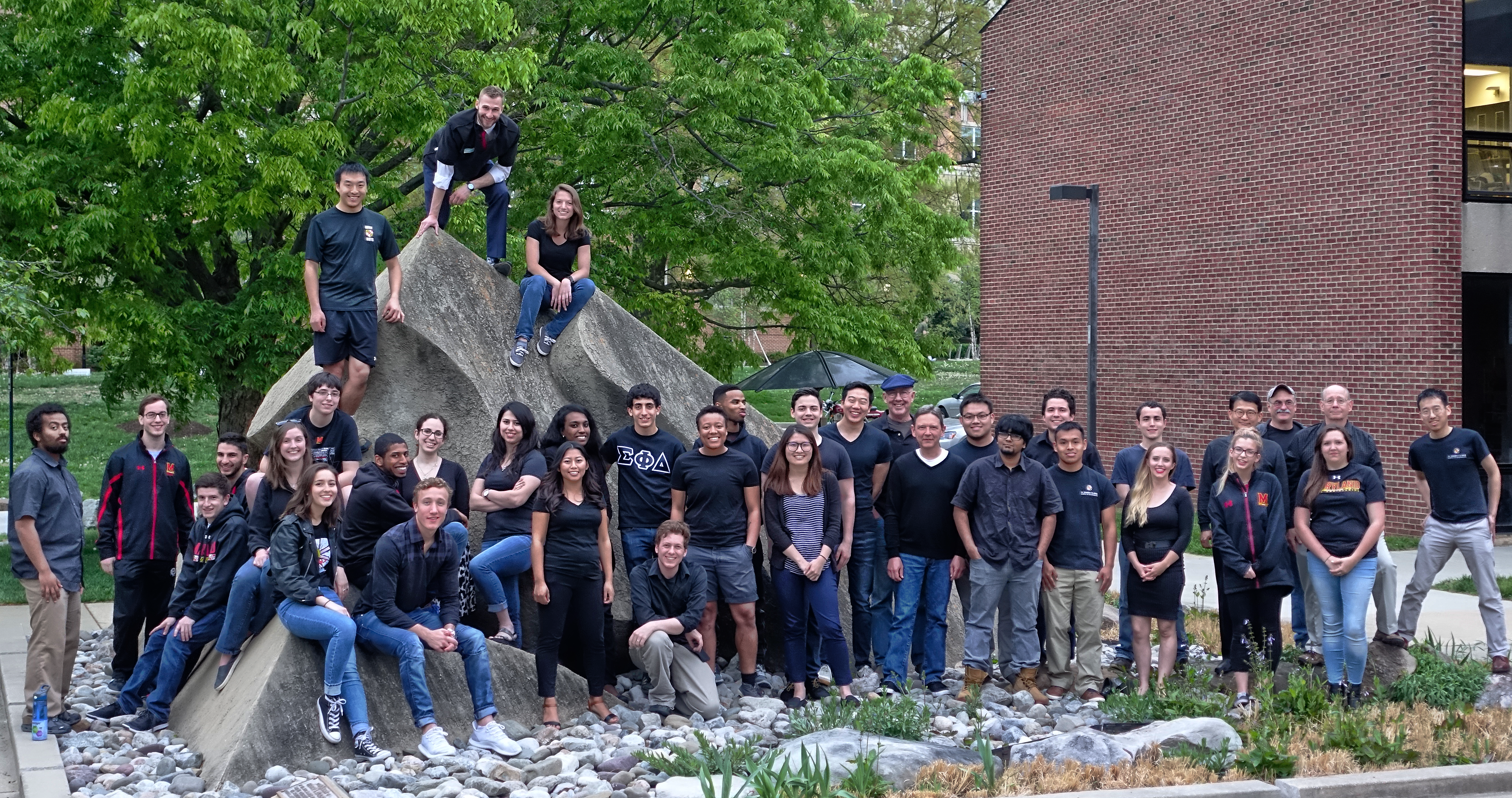
Maryland: University of Maryland
Team website: reACT
The U.S. Department of Energy Solar Decathlon team from the University of Maryland developed reACT for a married couple living in Denver, Colorado, who remain registered members of the Nanticoke Indian Tribe. With reACT—short for Resilient Adaptive Climate Technology—these students want to demonstrate that homes can help people live in harmony with nature while at the same time harnessing her gifts of solar energy, water, and food. Designed with influences from Nanticoke and Maryland tribal traditions, reACT includes a composting system, hydroponic garden, vegetable garden, and movable “living walls” covered in plants. The project also demonstrates urban farming—an important facet of self-sufficient living.
Team Deliverables
Design Philosophy
The Maryland team invites you to think of reACT as a living organism, with six modules performing vital functions. Systems that capture and process waste, water, and energy allow the house to operate with complete self-sufficiency, and the house’s living systems are fully disentangled from structure, so the house can adapt as occupants’ needs change—for example, by adding a new bedroom module. Much more than a “one-off,” reACT is intended to serve as a seminal prototype for a "house as a kit of parts" design concept. This kit consists of separate components and systems parts that can be efficiently manufactured, transported, assembled, and disassembled. The intention is to create a home-building kit that can be readily adapted to a range of clients, communities, construction technologies, and ecological environments.
Photos
Features and Technologies
- A mechanical core manages the flow of water, air, and energy.
- A central courtyard with an operable glass roof and wall panels extends the living space and acts as a solar heat collector.
- The house demonstrates urban and ancestral Native American farming with a hydroponic garden, exterior vegetable garden, and movable living walls.
- A barrel composter turns food scraps into nutrients, and a composting toilet processes human waste.
- A solar electric PV array with battery storage; rainwater and greywater collection and treatment systems; and a composting toilet allow the house to operate independently.
- Designed with influences from Nanticoke and Maryland tribal traditions, the house incorporates materials that consider tribal environmental ethics.
- An automated SmartHouse data collection and control system package enables residents to follow and learn from the data it collects and use energy wisely.
Video
View the video's text-alternative version
Market Strategy
Native American home buyers are increasingly seeking sustainable housing and renewable energy technologies to provide cultural renewal, self-sufficiency, economic opportunity, and sustainable returns on investment. At the same time, Native Americans who are living in urban centers and away from their traditional lands have a hard time maintaining their traditions and cultural ties. With reACT, Team Maryland has designed a prototype designed specifically for this market. reACT is in alignment with Native American values, as is evidenced in the home’s carefully designed HVAC, water, solar, living green wall systems, and open-source SmartHouse software.
With its "house as a kit of parts" design concept, reACT can be readily adapted to a range of clients, communities, construction technologies, and ecological environments. The modular and disentangled aspects of reACT are important to its unique market value. The footprint of conventional housing can be inflexible; in contrast, reACT’s disentangled design allows the home’s footprint to expand or contract to meet a family’s economic and space needs at any given time.
What's Next
reACT will be shipped back to Maryland, where it will live next to Maryland’s Solar Decathlon 2007 second-place house in a sustainability park to be used for research, education, and to showcase projects with regional industry and professional stakeholders.
Contact
Patricia Cossard
301-405-9065
Past Houses
Neither the United States, nor the Department of Energy, nor Energetics Incorporated, nor any of their contractors, subcontractors, or their employees make any warranty, express or implied, or assume any legal liability or responsibility for the accuracy, completeness, or usefulness for any purpose of any technical resources or data attached or otherwise presented here as reference material.
